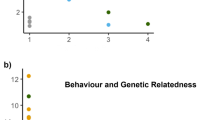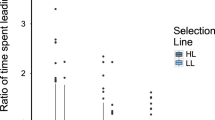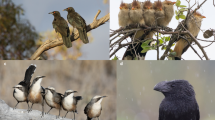Abstract
ALTRUISM is behaviour that benefits another individual at some cost to the altruist, costs and benefits being measured in terms of individual fitness. ‘Reciprocal altruism’ (ref. 1) implies the exchange of altruistic acts between unrelated individuals as well as between relatives. If the benefits to the recipient of an altruistic act exceed the costs to the altruist, and if the recipient is likely to reciprocate at a later time, then the cumulative benefits for both individuals will have exceeded the cumulative costs of their altruism. Natural selection would favour individuals that engaged in reciprocal altruism if they distributed their altruism with respect to the altruistic tendencies of the recipient, preferring individuals that were most likely to reciprocate and excluding nonaltruists from the benefits of further altruism. This model has been difficult to test because it is usually impossible to be certain that an example of altruism is not the product of ‘kin selection’2. The genetic relationships between individuals in animal populations are seldom known and reciprocal altruism can only be cited when it can be found to occur regularly between unrelated individuals. I report here that altruistic behaviour involving the formation of coalitions among male olive baboons (Papio anubis) fulfils the criteria for reciprocal altruism.
This is a preview of subscription content, access via your institution
Access options
Subscribe to this journal
Receive 51 print issues and online access
$199.00 per year
only $3.90 per issue
Buy this article
- Purchase on Springer Link
- Instant access to full article PDF
Prices may be subject to local taxes which are calculated during checkout
Similar content being viewed by others
References
Trivers, R. L. Q. Rev. Biol. 46, 35–57 (1971).
Hamilton, W. D. J. Theor. Biol. 7, 1–52 (1964).
Altmann, J. Behaviour 49, 227–267 (1974).
Packer, C. Nature 255, 219–220 (1975).
Hall, K. R. L. & DeVore, I. in Primate Behaviour (ed. by DeVore, I.), (Holt, New York, 1965).
Stoltz, L. P. & Saayman, G. S. Ann. Tranvs. Mus. 26, 99–143 (1970).
Hausfater, G. Contrib. Primatol. 7 (1975).
Ransom, T. W. thesis, Univ. California, Berkeley (1971).
Kraemer, H. C. Psychometrika 40, 473–484 (1975).
Packer, C. Proc. Sixth Intl. Congr. Primatol. (ed. by Harcourt, C. & Chivers, D. J. ) (Academic, London, in the press).
Author information
Authors and Affiliations
Rights and permissions
About this article
Cite this article
PACKER, C. Reciprocal altruism in Papio anubis. Nature 265, 441–443 (1977). https://doi.org/10.1038/265441a0
Received:
Accepted:
Published:
Issue Date:
DOI: https://doi.org/10.1038/265441a0
This article is cited by
-
Group size, partner choice and collaborative actions in male Indo-Pacific bottlenose dolphins (Tursiops aduncus)
Animal Cognition (2022)
-
Cognitive enrichment device provides evidence for intersexual differences in collaborative actions in Indo-Pacific bottlenose dolphins (Tursiops aduncus)
Animal Cognition (2021)
-
Solitary versus group living lifestyles, social group composition and cooperation in otters
Mammal Research (2021)
-
The storytelling arms race: origin of human intelligence and the scientific mind
Heredity (2019)
-
Do gray wolves (Canis lupus) support pack mates during aggressive inter-pack interactions?
Animal Cognition (2016)
Comments
By submitting a comment you agree to abide by our Terms and Community Guidelines. If you find something abusive or that does not comply with our terms or guidelines please flag it as inappropriate.



